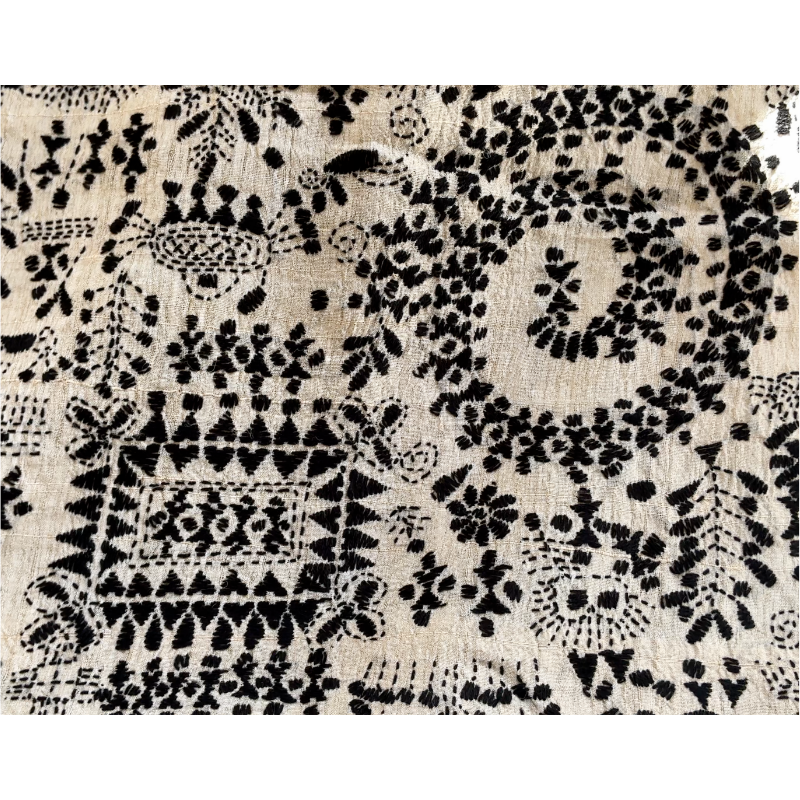From humble beginnings to high fashion (a brief story of kantha embroidery)
- Preeti Mehta

- Apr 2
- 3 min read
Updated: Jul 23
"To fathom the beliefs and myths which the village women create in each kantha is to understand their hopes and fears" - Rahman, Mohammed Sayeedur
Kantha embroidery is a textile art form that rural Begali women have been practicing for more than 500 years, though evidence of its existence dates back to 3000 years.
Between household chores they came together to create magic from worn out cloth, traditionally saris, breathing new life into them. It is a skill passed down from mother to daughter.
The women portrayed scenes and objects from daily life, folklore, mythology and religion. They created using a simple running stitch. Yarn stitches fill the empty space between the motifs.
As is depicted in the piece below, traditional designs had an image of the sun, a flower or as in this case a "charkha" or spinning wheel in the center.
These are known as "Nakshi" (to illustrate, or map). kantha.
The women layered and folded old cotton saris, stitching the edges to hold them together. This layered "quilt" became the joint canvas on which they embroidered motifs or simple rows of running stitches or both, whatever suited their fancy at the time.
It was their mode of self-expression, their outlet for expressing their joys, fears sorrows, hopes, fears and aspirations.
The masterpieces they created were mainly for personal use: a wrap to swaddle a
baby, a quilt to keep the family warm, a rug to welcome a special guest, a bed covering, altar cloth, wall art and more.
The word kantha is used to describe both, the stitch and the finished product.
The art form has risen and fallen with the fate of the women as they were impversished by war, imperialism, invasion and political upheaval.
Several attempts at revival have taken kantha from a cottage industry to a commercial endeavor.
Kantha Embroidery Today - a story of Women's Empowerment
Thanks to its commercialization today, many more women practice kantha today and earn a livelihood from it.
Well-known fashion designers globally build them into their designs. Contemporary designs are geometric, rather than based on historical motifs. Silk is now widely used as a canvas. Products are varied: scarves, shawls, jackets made from vintage quilts and new cloth and more.
So yes a lot has changed. Women don't necessarily create for themselves any more. Perhaps they've lost their opportunity for self-expression?
But they earn a living from their art. That is positive change. And it is coveted home based work.
This humble art is still created today in small, unassuming village homes, by women who spend days, weeks and even months on a single piece.
Check out this gorgeous pieces below.
Check out my entire Kantha collection here. More sari shawls coming soon! And yes, there are necklaces too.
I'm so happy to see you here. I hope you will be back.










Comments